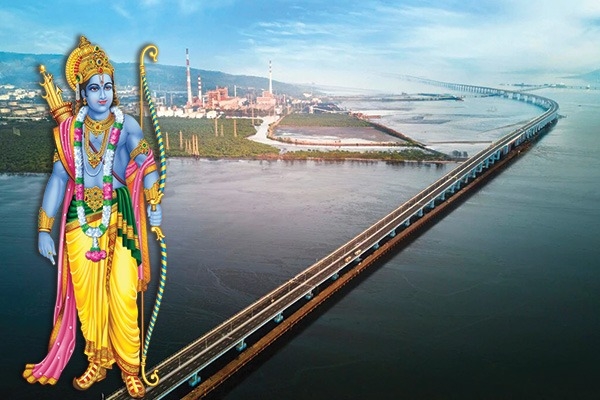Ram Setu to Atal Setu: Navigating India's Infrastructure Renaissance
The seeds sown by Ram Setu are now reaching new heights with the modern infrastructure that we can see through the new Atal Setu.
Total Views |
"India will become the third-largest economy"- Prime Minister Narendra Modi.
Nowadays these words echo in speeches, debates, and conversations. But have you wondered what it takes to make the country the largest economy? One of the major factors that is involved is the country’s infrastructure development. Infrastructure plays a pivotal role in fostering economic growth and development, acting as the backbone of any nation's progress. In the context of India, a rapidly evolving and dynamic economy, the importance of robust infrastructure cannot be overstated.

India is undertaking ambitious infrastructure projects such as the Chenab Bridge in Jammu and Kashmir or the recently inaugurated Atal Setu in Maharashtra. Projects like these showcase the immense talent that Indian engineers possess and are proof that with the right leadership, this talent can create innovative and sustainable infrastructure for the growth of India.
For years, the lack of Modern Infrastructure was a barrier to our development, PM Modi stated in one of his speeches last year. But now the tables are turning and India is currently undergoing the world's largest infrastructure-building program.
The Virasat and Vikas of Indian Infrastructure
The narrative of Indian infrastructure is not a recent phenomenon; it finds its roots in the ancient Ram Setu, symbolizing the enduring spirit of innovation and progress in the nation. Ram Setu was built by the Vanar Sena with the help of Nala who is the architect of the setu for Lord Ram to cross the ocean and reach Lanka to rescue Sita from the shackles of Ravan.
As exemplified by the modern Atal Setu and the ongoing construction of the Ram Mandir in Ayodhya, infrastructure projects are not only religious or cultural landmarks but key drivers of economic growth, business, and tourism.
The seeds sown by Ram Setu are now reaching new heights with the modern infrastructure that we can see through the new Atal Setu.
And now that the Ram Mandir in Ayodhya is being built, it is igniting the spiritual component of the common man and boosting the growth engine of India through tourism. Temples, historically and in some cases even today, have played a significant role not only in spiritual and cultural spheres but also in influencing the economic landscape.
The Ram Mandir is not just about religion it is also about business and the economy. Recently in a public meeting in Ayodhya, PM Modi emphasized how the campaign to make India a developed country is getting new speed and boost from Ayodhya. "Today, the foundation stone for development projects worth over Rs 15 thousand crore was laid and launched here. These infrastructure-related projects will re-establish contemporary Ayodhya as a proud feature on the national map. Today's India is renovating its holy sites while simultaneously absorbed in the world of digital technologies," he stated.
Economic Impact of Ayodhya's Development
Aside from the temple complex, Ayodhya has received funding for a multitude of developmental and infrastructure projects that will not only boost tourism in and around the city but will also transform the city into a regional growth hub, spurring business and economic activity throughout the region as a result of improved connectivity.
Temples in India attract millions of devotees and tourists from across the globe. The influx of visitors contributes significantly to the economy by boosting the tourism industry. According to projections, the city would have a 1:10 resident-to-tourist ratio after the Ram Mandir is fully completed and redeveloped, indicating a significant potential for pilgrimage. According to sources, the greenfield township will have provisions for state guest homes, hotels to accommodate all types of tourists, and commercial buildings to meet requirements.
Ayodhya has also seen a massive surge in real estate development ahead of the consecration ceremony of Ram Lalla and the inauguration of the newly built Ram Mandir. Bollywood actor Amitabh Bachchan recently bought a plot of land in The Saraayu Project, a 7-star mixed-use complex in Ayodhya.
As India forges ahead with its ambitious infrastructure initiatives, intertwining spirituality with economic development, the nation stands at the crossroads of a transformative journey. The synergy between tradition and progress, exemplified by projects like the Ram Mandir, is poised to propel India towards not only economic prosperity but also cultural and spiritual renaissance.


